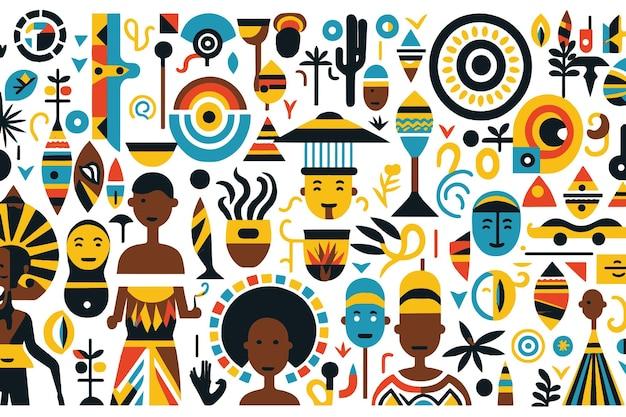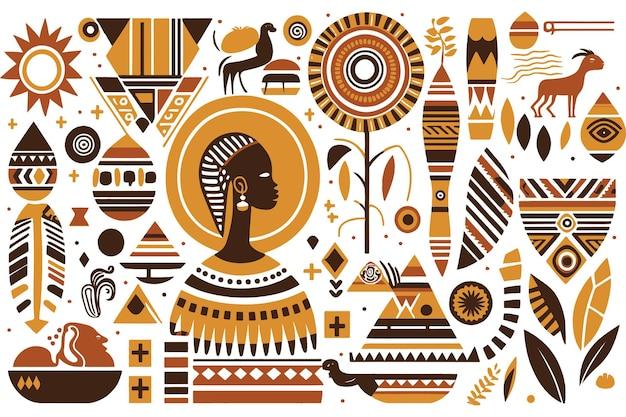Folklore is an integral part of human culture, passed down through generations to entertain, teach, and preserve the wisdom of our ancestors. From ancient myths to fables and folktales, these traditional stories have captivated audiences for centuries with their timeless themes and life lessons. But what exactly are the types of folklore? And do these captivating tales still hold relevance in today’s fast-paced world?
In this blog post, we will dive deep into the world of folklore and explore its various forms. We’ll uncover the different genres that encompass folklore, ranging from myths and legends to fables and fairy tales. Along the way, we’ll discover the moral lessons hidden within these enchanting narratives and how they continue to resonate with us even in the modern era.
So, if you’ve ever wondered about the meaning behind stories, the importance of life lessons, or the different classifications of folk literature, you’re in for a treat. Join us as we embark on an intriguing journey through the captivating world of folklore and uncover the timeless wisdom that it holds.

What Are the Types of Folklore
Folklore is a captivating realm filled with an array of fascinating stories, customs, and traditions that have been passed down through generations. This rich tapestry of cultural heritage showcases the diversity and creativity of human imagination. So, let’s delve into the enchanting world of folklore and discover its various types!
Legends: Tales that Transcend Time
Legends are larger-than-life narratives that often blend historical events with fictional elements, blurring the line between reality and imagination. These captivating stories feature extraordinary heroes, daunting villains, and mythical creatures. From the legendary adventures of King Arthur to the epic tales of Robin Hood, legends have an enduring allure that transcends time.
Myths: Gods, Goddesses, and Ancient Wonders
Myths, often steeped in religious or spiritual significance, tell stories about gods, goddesses, and deities. These ancient tales portray the creation of the universe, the heroic deeds of gods and goddesses, and the relationships between mortals and divine beings. Explore the timeless wonder of Greek mythology with stories of Zeus, Poseidon, and Athena or venture into the mesmerizing realm of Norse mythology with Odin, Thor, and Loki.
Fairy Tales: Whimsical Worlds and Magical Beings
Step into a world of enchantment with the whimsical realm of fairy tales. These delightful stories are populated by magical beings such as fairies, elves, talking animals, and brave protagonists. Whether you embark on a magical journey with Cinderella, find yourself in a curious wonderland with Alice, or join forces with Snow White and the Seven Dwarfs, fairy tales unlock the door to imagination and wonder.
Fables: Lessons Wrapped in Animal Tales
Fables are charming stories that convey moral lessons through the actions and behaviors of animals or mythical creatures. These timeless tales use anthropomorphism to teach valuable life lessons in an entertaining and memorable way. From the wisdom of Aesop’s Fables, like “The Tortoise and the Hare,” to the clever tales of Jean de La Fontaine, such as “The Fox and the Grapes,” the animal kingdom is the stage where characters impart wisdom to readers of all ages.
Folktales: Local Legends and Oral Traditions
Folktales are a cherished part of cultural heritage, passed down through generations by word of mouth. These captivating stories often reflect the values, beliefs, and traditions of specific regions or communities. Folktales can revolve around heroic exploits, cunning tricksters, supernatural beings, or everyday challenges. Dive into the world of African folktales with Anansi the spider or discover the moral teachings hidden within the tales of the Brothers Grimm.
Tall Tales: Exaggerations, Adventures, and Wild Imagination
Tall tales are a delightful blend of humor, exaggeration, and adventure. These larger-than-life stories often feature larger-than-life characters and events. From Paul Bunyan and his mighty blue ox to Pecos Bill riding tornadoes, tall tales stretch the boundaries of reality and ignite the imagination. These exaggerated narratives captivate readers with their outrageous humor and leave them in awe of the extraordinary feats accomplished by their protagonists.
Urban Legends: The Haunting Tales of Modern Times
Urban legends are modern folklore that often circulates in contemporary society, passed around in whispered conversations or shared online. These chilling tales blur the line between fiction and reality, often centering around supernatural events, unsolved mysteries, or strange occurrences. Whether it’s the eerie tale of the “Hookman” or the spine-tingling legend of “Bloody Mary,” urban legends fuel our fascination with the unknown and the macabre.
Folklore spans across cultures and history, bringing forth an assortment of captivating stories that have captured the imaginations of countless individuals. Each type of folklore provides a unique window into the fabric of human creativity, beliefs, and traditions. So, brace yourself for an enchanting journey as you explore the magical realms of legends, myths, fairy tales, fables, folktales, tall tales, and urban legends. Let the power of storytelling transport you to worlds both familiar and extraordinary!

FAQs: Types of Folklore
What is a story with a meaning called
A story with a deeper meaning is known as a folklore tale. These tales have been passed down through generations, capturing the essence of a culture and offering valuable insights into the human experience. From mythical creatures and heroic adventures to cautionary tales, folklore encompasses a wide range of narratives that teach us about life.
Do folktales have any relevance today
Absolutely! Folktales continue to hold significant relevance in our modern world. Despite the ever-changing times, the wisdom and lessons embedded within folktales remain timeless. They provide valuable insights on morality, human behavior, and societal norms, making them rich reservoirs of wisdom that can still inform and shape our lives today.
What is a life lesson called
A life lesson is often referred to as a moral in folklore. The moral of a story encapsulates the underlying ethical message or lesson that the tale imparts. These morals serve as guiding principles, teaching us valuable lessons about kindness, honesty, courage, and many other virtues that can help navigate the complexities of life.
What’s the difference between a lesson and a theme
While a moral focuses on the specific lesson or ethical message of a story, a theme refers to the broader underlying idea or concept explored in the narration. Themes can encompass various aspects, such as love, justice, betrayal, or the pursuit of knowledge. They provide a framework for understanding the story’s overarching meaning and offer different layers of insight and interpretation.
What is the most famous fable
One of the most renowned fables is Aesop’s Fables. These timeless tales, attributed to the ancient Greek storyteller Aesop, have captivated audiences for centuries with their clever animal characters and thought-provoking morals. Fables like “The Tortoise and The Hare” and “The Lion and The Mouse” continue to be widely recognized and cherished around the world.
What are lessons about life
Lessons about life, often found in folklore, cover a wide range of topics that provide guidance and insights for navigating the complexities of human existence. These lessons can revolve around virtues such as honesty, kindness, perseverance, and humility, promoting personal growth and moral development. Folklore tales offer a treasure trove of wisdom designed to illuminate the path of life.
What are the 5 genres of folklore
The five primary genres of folklore are:
- Mythology: Exploring origin stories, creation myths, and the beliefs and behaviors of gods and goddesses.
- Fables: Short narratives featuring animals or inanimate objects with human traits, teaching moral lessons.
- Fairy tales: Enchanting stories often involving magical elements, princes and princesses, and lessons about good and evil.
- Legends: Narratives based on real or historical events, often enhanced with imaginative embellishments and heroic feats.
- Tall tales: Whimsical tales featuring larger-than-life characters and exaggerated events, typically rooted in American folklore.
What is the moral lesson of the folktale Little Red Cap
The folktale Little Red Cap, also known as Little Red Riding Hood, delivers a cautionary moral lesson about the dangers of naivety and disobedience. It warns against straying from the designated path and trusting strangers blindly. The tale serves as a reminder to exercise caution and critical thinking in unfamiliar situations.
Which type of folktale ends with a lesson or moral
Fables are a type of folktale that consistently ends with a clear moral or lesson. These captivating narratives often feature anthropomorphic animals who face dilemmas and challenges, ultimately providing readers with a concise moral message to ponder upon. Fables succeed in both entertaining and educating readers, all while wrapping up with a thought-provoking lesson.
What is the difference between theme and central message
While a theme encompasses the broader concepts explored throughout a story, the central message hones in on the specific insight or takeaway conveyed by the author. Themes provide a lens to view the narrative, whereas the central message crystallizes the author’s intended communication, focusing on a single idea or moral that adds depth to the overall storytelling experience.
What are the types of folklore
Folklore comes in various forms, including:
- Myths: Traditional stories that explain natural phenomena, creation, or the beliefs and origins of a culture.
- Legends: Narratives based on real or historical events but often enhanced with imaginative elements.
- Fables: Short tales featuring animals or inanimate objects with human characteristics, teaching moral lessons.
- Fairy tales: Enchanting stories typically featuring magical elements, royalty, and timeless themes of good versus evil.
- Tall tales: Humorous, exaggerated narratives centered around larger-than-life characters and events, often rooted in American folklore.
What are the two classifications of folk literature
Folk literature can be classified into two categories:
- Oral Tradition: Referring to stories passed down through generations via oral communication, including folklore tales, myths, and legends that were originally shared through spoken word.
- Written Tradition: Folklore that has been transcribed into written form, ensuring its preservation and wider dissemination. This category encompasses folktales, fables, fairy tales, and other folklore literature that has been recorded for posterity.
Do folktales have morals
Yes, many folktales incorporate morals or lessons. These morals are shared through engaging stories that entertain and educate. Folktales often offer guidance on ethical behavior, promote virtues such as honesty and empathy, and caution against vices like greed and pride. Through these moral lessons, folktales continue to inspire and shape individuals across generations.
What is the purpose of folk literature
The purpose of folk literature extends beyond mere entertainment. It serves as a cultural repository, preserving the wisdom and traditions of a community. Folk literature educates, instills values, and fosters a sense of identity. It provides a platform for passing down knowledge, moral lessons, and life experiences from one generation to another, ensuring the timeless preservation of our shared human heritage.
